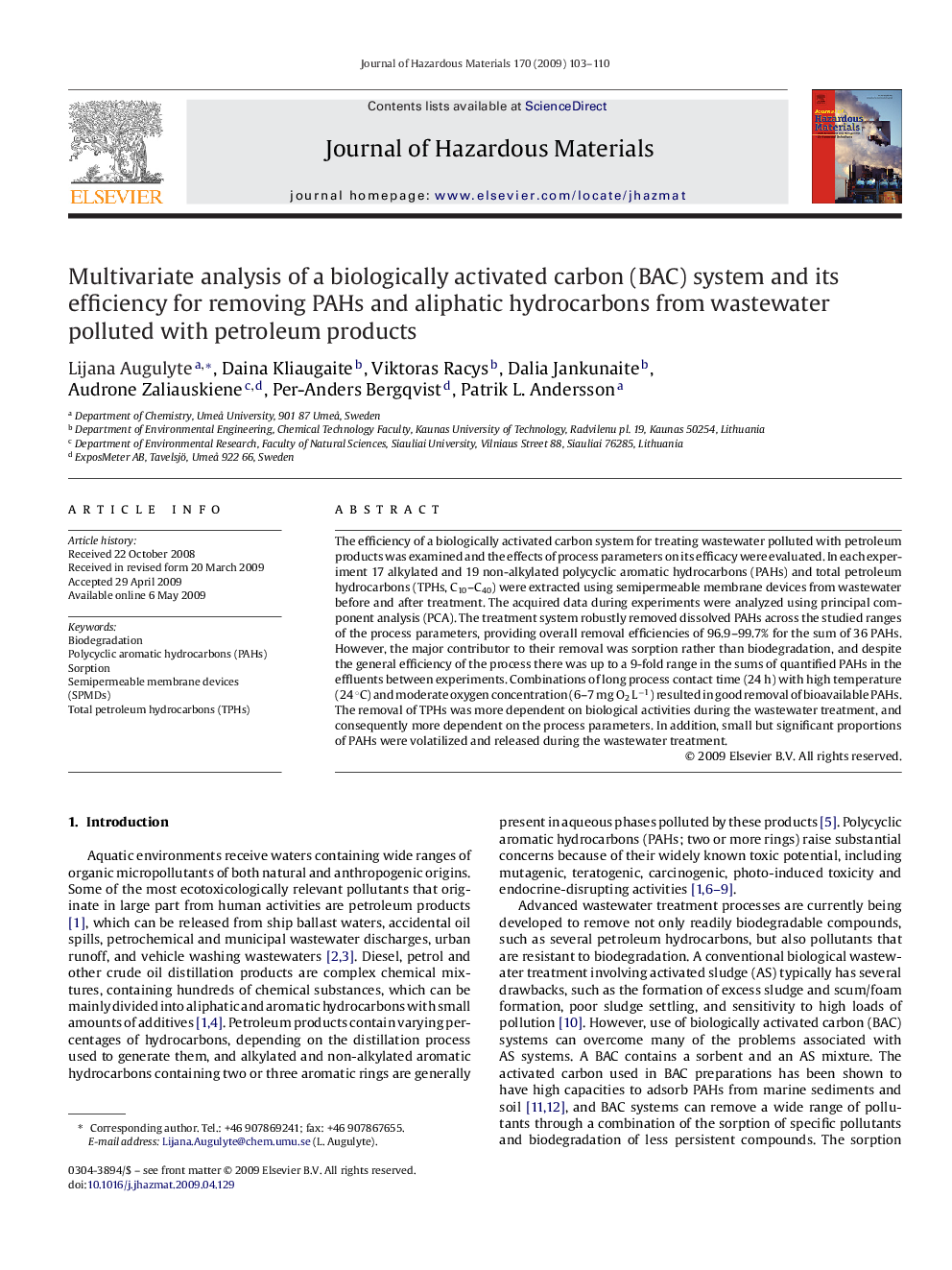| Article ID | Journal | Published Year | Pages | File Type |
|---|---|---|---|---|
| 581397 | Journal of Hazardous Materials | 2009 | 8 Pages |
Abstract
The efficiency of a biologically activated carbon system for treating wastewater polluted with petroleum products was examined and the effects of process parameters on its efficacy were evaluated. In each experiment 17 alkylated and 19 non-alkylated polycyclic aromatic hydrocarbons (PAHs) and total petroleum hydrocarbons (TPHs, C10-C40) were extracted using semipermeable membrane devices from wastewater before and after treatment. The acquired data during experiments were analyzed using principal component analysis (PCA). The treatment system robustly removed dissolved PAHs across the studied ranges of the process parameters, providing overall removal efficiencies of 96.9-99.7% for the sum of 36 PAHs. However, the major contributor to their removal was sorption rather than biodegradation, and despite the general efficiency of the process there was up to a 9-fold range in the sums of quantified PAHs in the effluents between experiments. Combinations of long process contact time (24 h) with high temperature (24 °C) and moderate oxygen concentration (6-7 mg O2 Lâ1) resulted in good removal of bioavailable PAHs. The removal of TPHs was more dependent on biological activities during the wastewater treatment, and consequently more dependent on the process parameters. In addition, small but significant proportions of PAHs were volatilized and released during the wastewater treatment.
Related Topics
Physical Sciences and Engineering
Chemical Engineering
Chemical Health and Safety
Authors
Lijana Augulyte, Daina Kliaugaite, Viktoras Racys, Dalia Jankunaite, Audrone Zaliauskiene, Per-Anders Bergqvist, Patrik L. Andersson,
